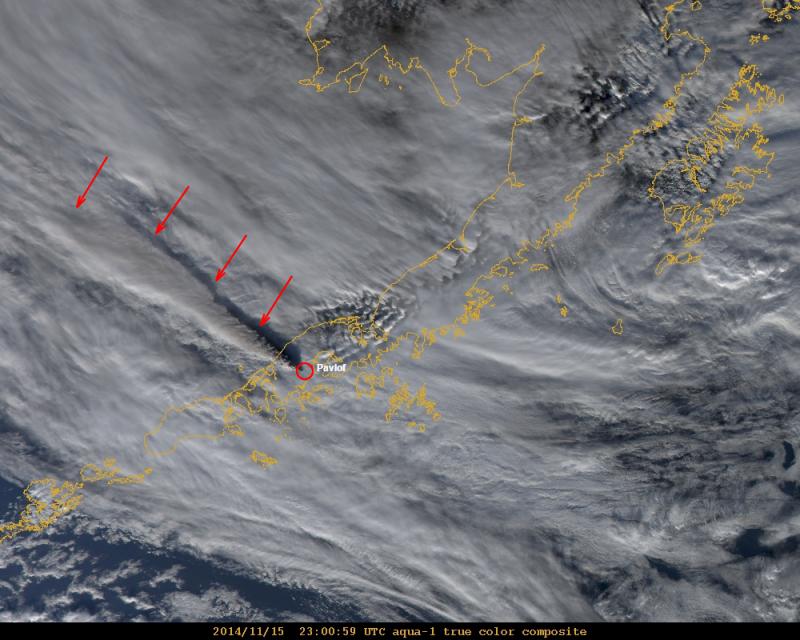Alaska's Pavlof Volcano Belches Out Ash Cloud

One of Alaska's most active volcanoes spewed ash 35,000 feet (about 10,600 meters) above sea level on Saturday (Nov. 15), prompting a warning for pilots flying near the Alaska Peninsula peak.
Winds blew the ash from Pavlof volcano to the northwest, across the waters of Bristol Bay and away from the nearby communities of Cold Bay and King Cove, according to the National Weather Service's Anchorage office. This is the second eruption this year for Pavlof volcano.
The volcanic activity died down about 7 p.m. local time (11 p.m. EST) on Sunday (Nov. 16), the Alaska Volcano Observatory (AVO) said in a statement. Pauses of days to weeks are common during Pavlof's outbursts and the eruption could revive with little warning, the AVO said. No canceled flights were reported and the aviation warning was lowered from red to orange on Sunday.
Pavlof's eruption began Wednesday (Nov. 12) when a glowing lava fountain burst from a vent just north of the summit. Pilots reported avalanches of ash and rock cascading down the volcano's northern slope, and occasional outbursts of ash reaching 16,000 feet (about 4,900 m). A seismic monitoring network picked up underground tremors that signal magma (molten rock) pushing toward the surface. Satellites also detected a thermal hotspot at the volcano's summit.
Located more than 600 miles (965 kilometers) southwest of Anchorage, Pavlof has erupted nearly 50 times since the mid-18th century. The most recent eruption started May 31 and likely ended by late June, the AVO said.
Pavlof is one of three southwestern Alaskan volcanoes currently rumbling with seismic tremors or shooting out puffs of ash. The AVO is also monitoring Shishaldin volcano, now at an orange alert level, and Cleveland volcano, listed at yellow alert level. The color codes are designed to warn pilots of potentially hazardous volcanic activity. The four levels range from green (no activity) to red (imminent eruption or eruption is underway).
Follow Becky Oskin @beckyoskin. Follow LiveScience @livescience, Facebook & Google+. Originally published on Live Science.
Sign up for the Live Science daily newsletter now
Get the world’s most fascinating discoveries delivered straight to your inbox.










